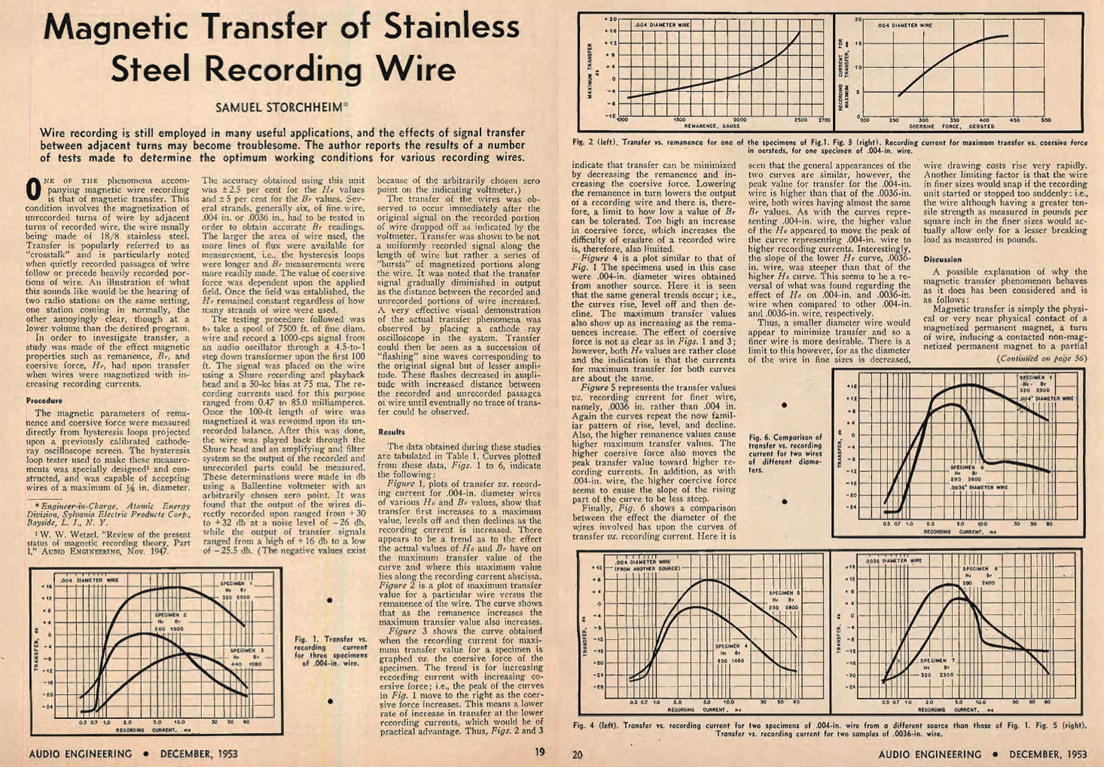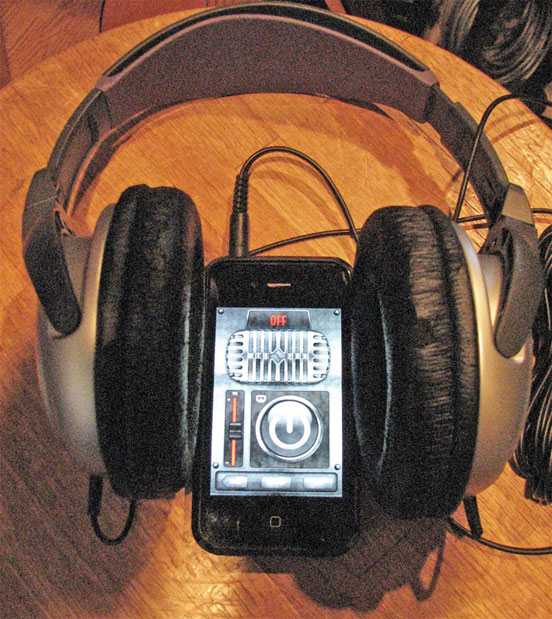Today sound recording is pretty much taken for granted. A smart phone (right) can capture very high quality sound. Touch a screen and instantly sound is recorded...video too! It definitely has not always been that easy!
Wire Recorders
Wire recording or magnetic wire recording is an analog type of audio storage in which a magnetic recording is made on thin steel or stainless steel wire.
The wire is pulled rapidly across a recording head which magnetizes each point along the wire in accordance with the intensity and polarity of the electrical audio signal being supplied to the recording head at that instant. By later drawing the wire across the same or a similar head while the head is not being supplied with an electrical signal, the varying magnetic field presented by the passing wire induces a similarly varying electric current in the head, recreating the original signal at a reduced level.
Magnetic wire recording was replaced by magnetic tape recording, but devices employing one or the other of these media had been more or less simultaneously under development for many years before either came into widespread use. The principles and electronics involved are nearly identical. Wire recording initially had the advantage that the recording medium itself was already fully developed, while tape recording was held back by the need to improve the materials and methods used to manufacture the tape.
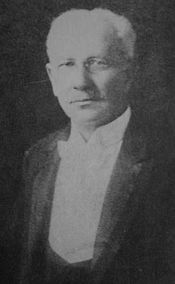 It's interesting that the phone became such a good sound recorder, because in the late 1890's it was Valdemar Poulsen, a Danish engineer who developed a magnetic wire recorder in 1899 which was based on Oberlin Smith's
It's interesting that the phone became such a good sound recorder, because in the late 1890's it was Valdemar Poulsen, a Danish engineer who developed a magnetic wire recorder in 1899 which was based on Oberlin Smith's 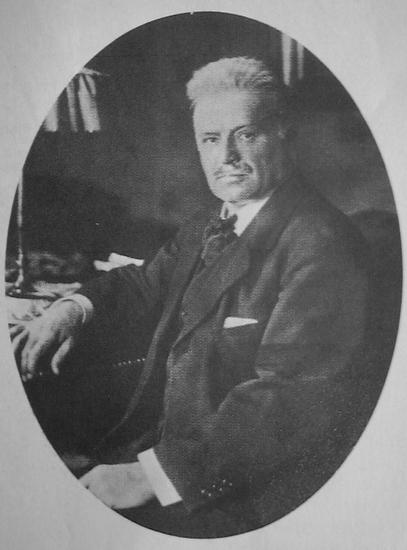 magnetic recording theories in 1878. Why? To be a device to take messages from the telephone. Telephone answering devices and dictating recorders drove the early wire recorders, as well as Edison's cylinder recorders & players.
magnetic recording theories in 1878. Why? To be a device to take messages from the telephone. Telephone answering devices and dictating recorders drove the early wire recorders, as well as Edison's cylinder recorders & players.
Magnetic recording was conceived of as early as 1877 by the American engineer Oberlin Smith (left) and demonstrated in practice in 1898 by Danish engineer Valdemar Poulsen (right). Analog magnetic wire recording, and its successor, magnetic tape recording, involve the use of a magnetizable medium which moves with a constant speed past a recording head. An electrical signal, which is analogous to the sound that is to be recorded, is fed to the recording head, inducing a pattern of magnetization similar to the signal. A playback head can then pick up the changes in magnetic field from the tape and convert it into an electrical signal.
Martin, attached is the Morse Key that belonged to Valdamar Poulsen and later Harry Sands - Paul Rich 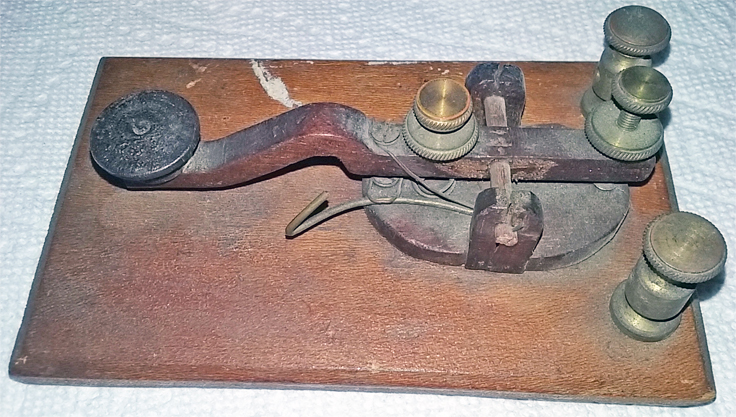
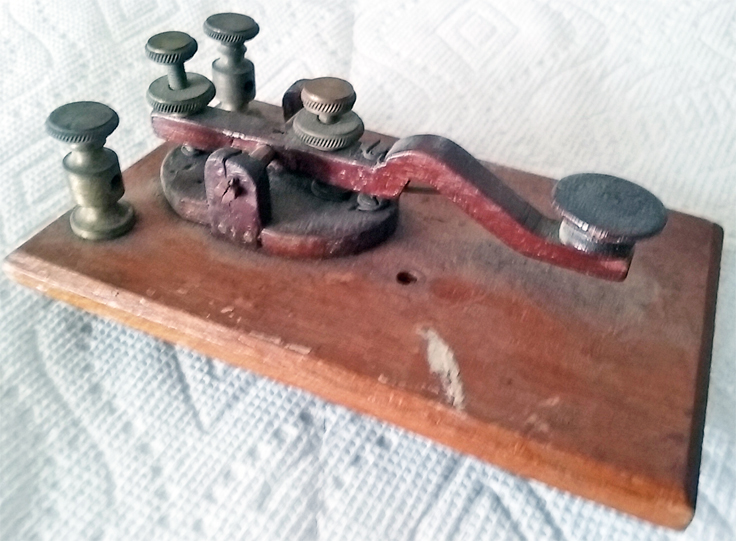
Valdamar Poulsen Morse code key
photos donated by Paul Rich
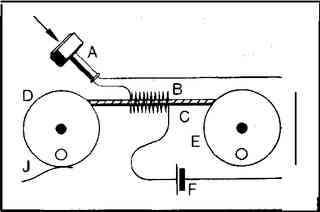
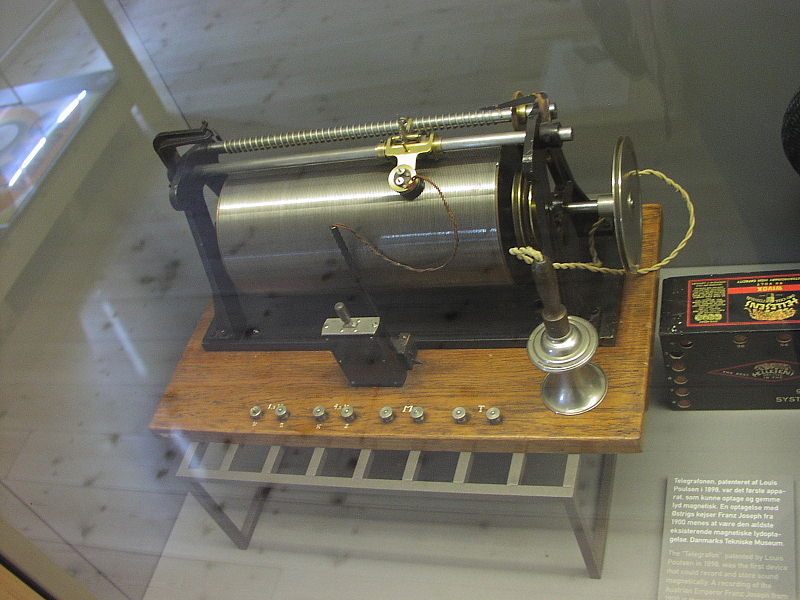
Smith's first diagram (left above) • Poulsen's magnetic wire recorder (right above)
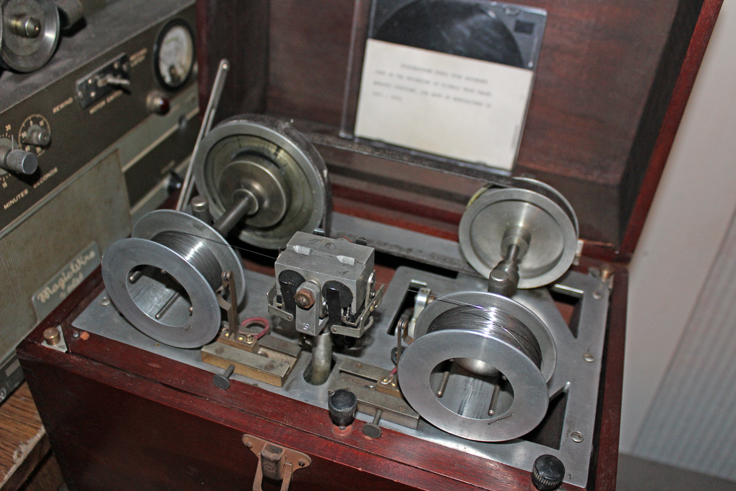 The Telegraphone photo (left) is from the Gaylord Ewing collection. The "History Card" with the Telegraphone, states that it was manufactured
The Telegraphone photo (left) is from the Gaylord Ewing collection. The "History Card" with the Telegraphone, states that it was manufactured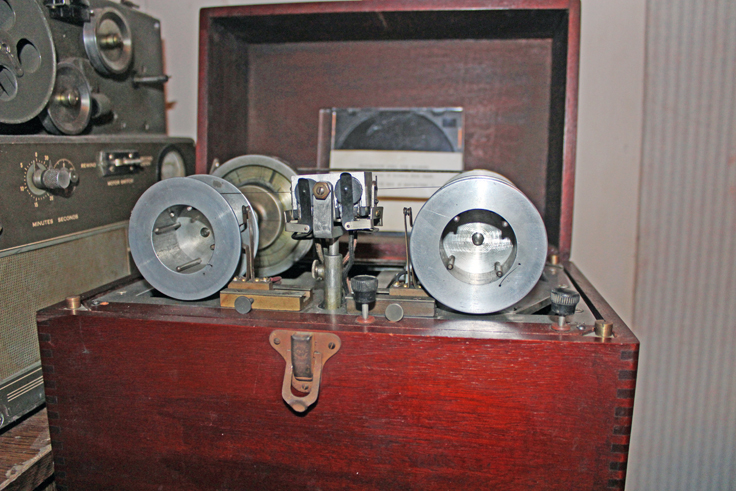 between 1915to 1918. It was used to make recordings of Oceanic Radio.
between 1915to 1918. It was used to make recordings of Oceanic Radio.
American Telegraphone sold Telegraphone for use as scientific instruments, telephone answering machines, and office dictating systems. While several hundred were sold to curious scientists, only one or two were actually used for telephone or dictation recording. After a few years, American Telegraphone closed its doors, and the magnetic recorder was not heard from in the United States for many years.
photos of the Telegraphone donated to the Museum by Gaylord Ewing
 This Emerson Record-O-Phone Telegraphone was for sale in 2012. We were sent the photos and the Seller stated "This extremely rare Record-O-Phone is a Telegraphone and is a direct descendant of Valdemar Poulsen's first Telegraphone of 1898. The Poulsen Telegraphone is the point of origin of all magnetic recording devices. As you read this, every computer hard disk disc drive should take a nanosecond to salute Poulsen, a Dane from Copenhagen, who discovered and harnessed magnetic recording, one of the life forces of the electronic computer revolution.
This Emerson Record-O-Phone Telegraphone was for sale in 2012. We were sent the photos and the Seller stated "This extremely rare Record-O-Phone is a Telegraphone and is a direct descendant of Valdemar Poulsen's first Telegraphone of 1898. The Poulsen Telegraphone is the point of origin of all magnetic recording devices. As you read this, every computer hard disk disc drive should take a nanosecond to salute Poulsen, a Dane from Copenhagen, who discovered and harnessed magnetic recording, one of the life forces of the electronic computer revolution.
By 1905/6, the American Telegraphone Company, headquartered in lower Manhattan, had a small number of Telegraphones produced at a Wheeling, West Virginia factory. By the end of 1910, the company had a manufacturing facility in Springfield, Massachussets. It was during the late teens that the American Telegraphone Company ceased manufacturing Telegraphones.
According to Professor Mark Clark, the leading authority on the history of the Telegraphone, probably less than 200 machines were manufactured. The few machines that survive today are mostly in museums or in the hands of lucky private collectors.
This Telegraphone that was manufactured during the early to mid 1920s and marketed as a Record-O-Phone, a Washington, D.C. headquartered company that had H. P. O'Reilly at the helm. O'Reilly was a former sales agent of the American Telegraphone Company.
I know of a Record-O-Phone in a private museum collection in Europe, another in a private collection here in the U.S. and an example in the holdings of the Smithsonian Institution's American History Museum. The fourth example is what you are looking at.
The original dove tailed wood case of the Record-O-Phone measures approximately 285 H x 330 W x 225 D mm. The wood case cover has been damaged and is now detached from the hinges on the wood body (please see image that shows the wood loss). There is also an age split on the top cover. The mechanism is in remarkably fine condition but is missing one of four hand turned screw speed adjusters. Fortunately, this can be reproduced by using one of the other three as an example. The machine bears serial #680. I doubt that the series began with serial # 1.
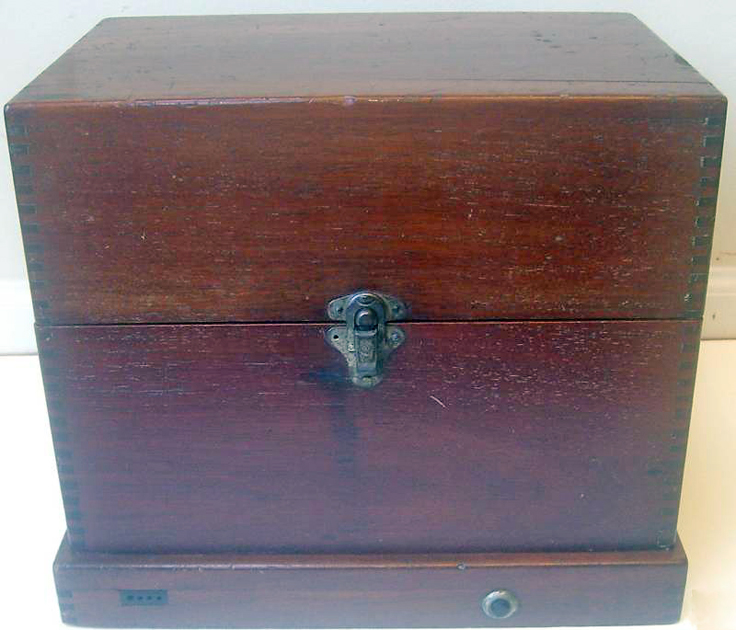
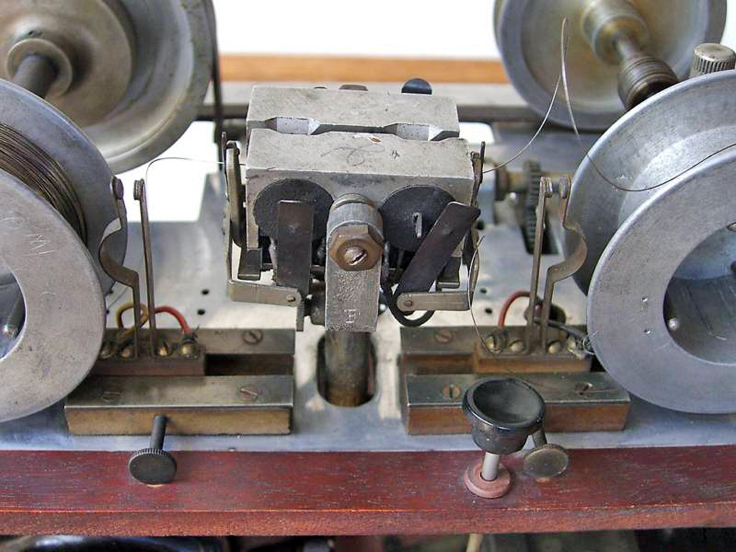
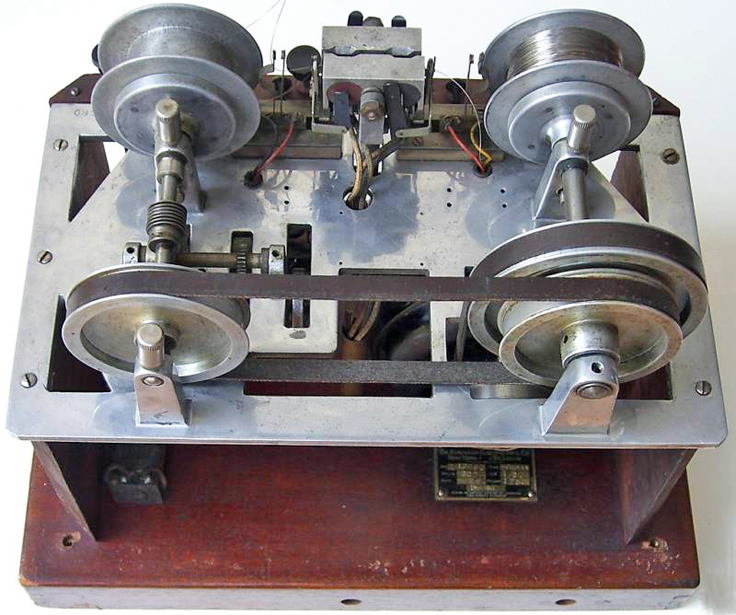
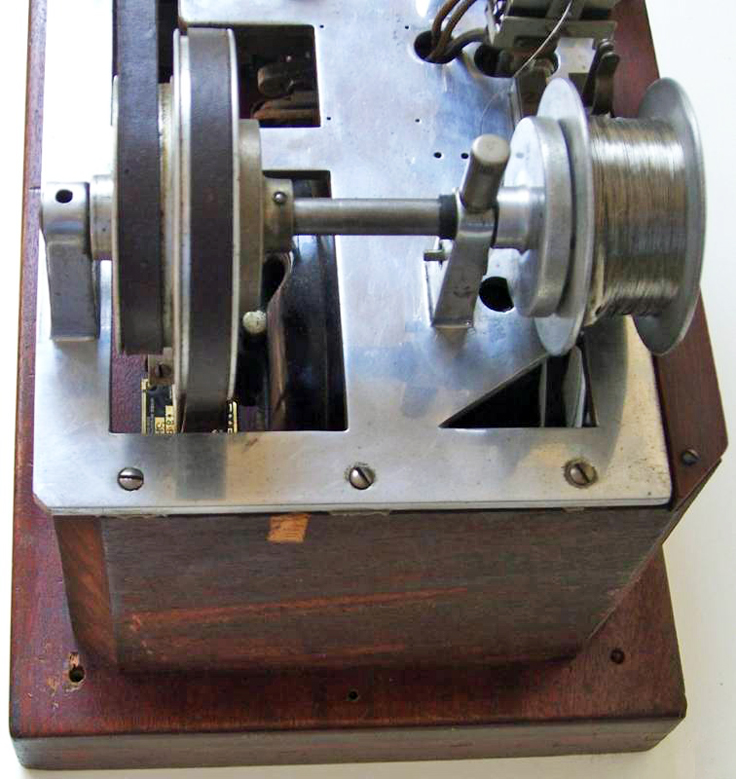


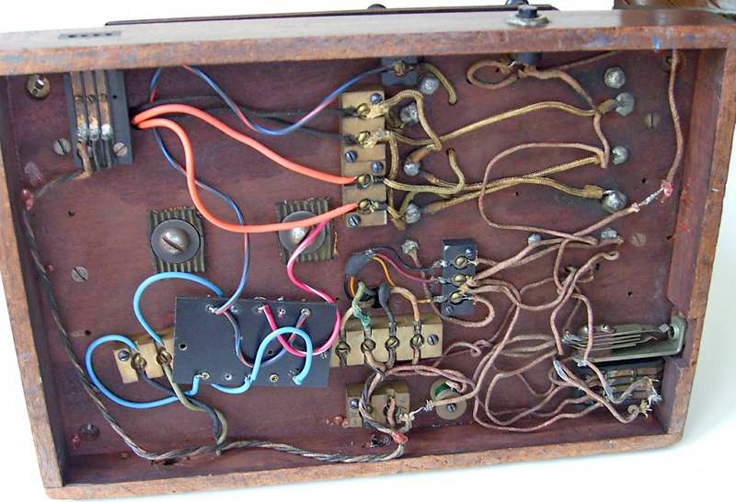
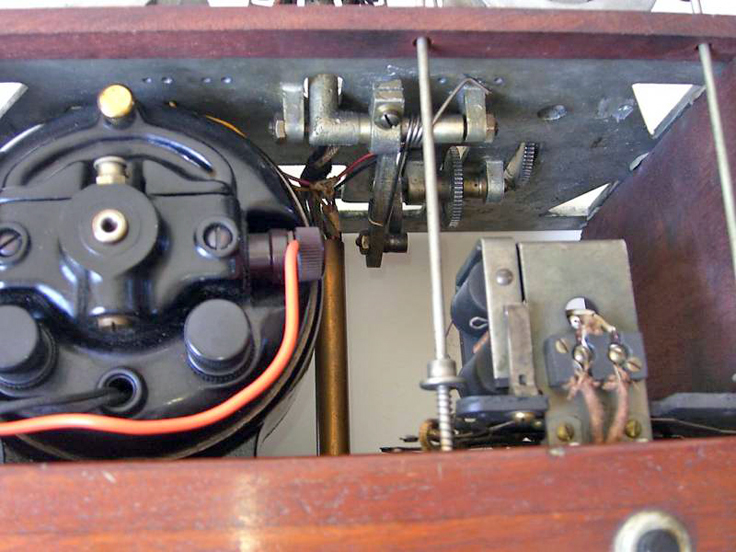
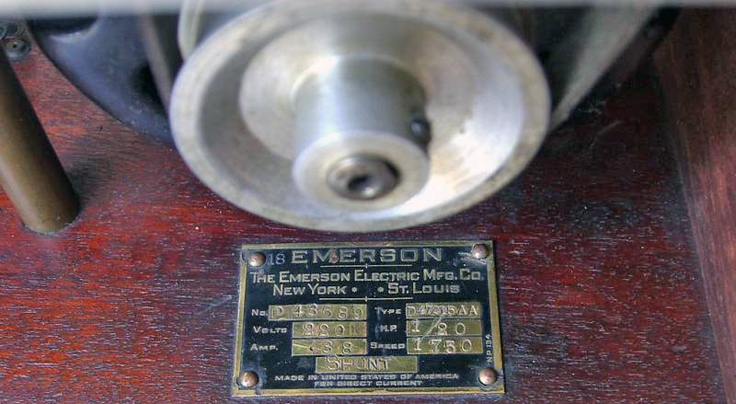
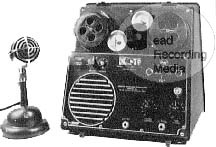 Wire recorders were used by the U.S Navy during WW II.
Wire recorders were used by the U.S Navy during WW II.
During the war, Armour Research Foundation received a contract from the United States Navy to develop a portable sound recorder. The original recorder was modified make it more rugged. Between 1942 and the end of the war, Armour and a licensed manufacturer, General Electric, have made perhaps a few thousand of these recorders. They were used for many purposes throughout the war, most notably as a portable field recorder for journalists. Armour Research Foundation
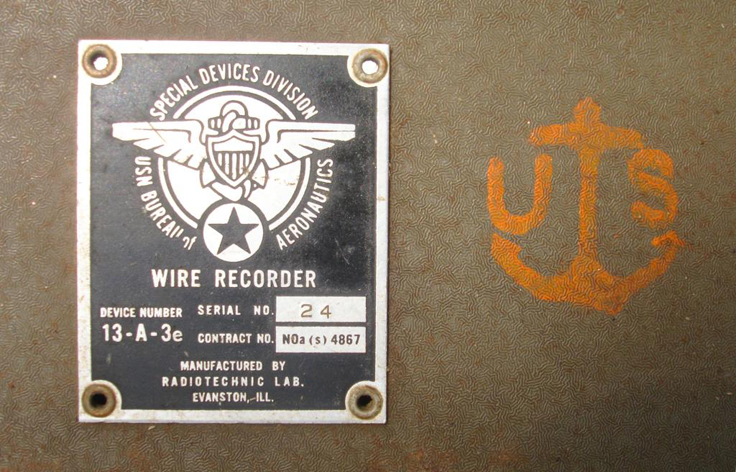
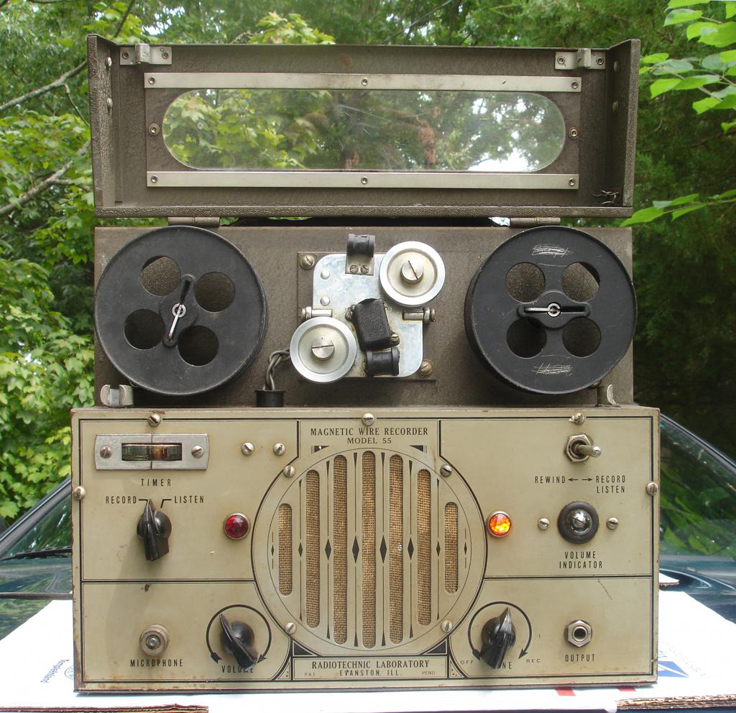
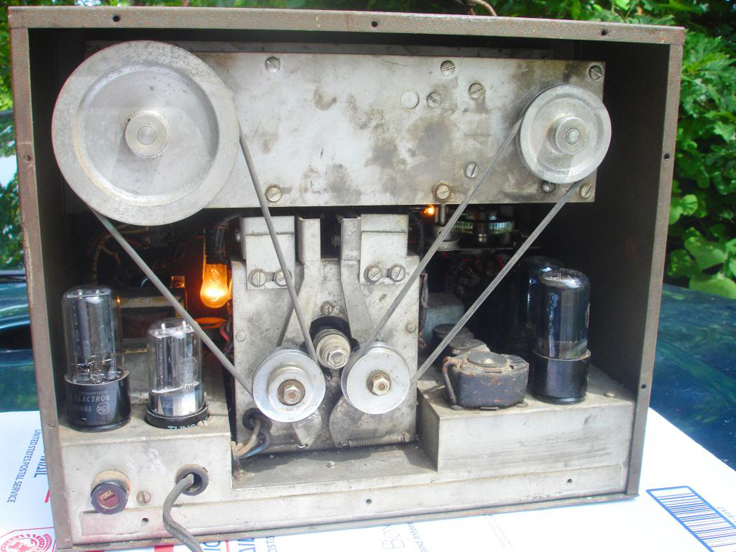
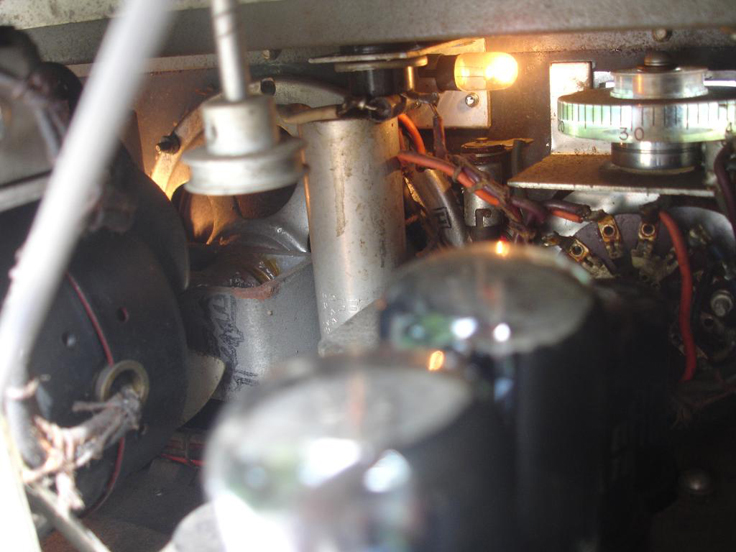
 In 1944-1945, the 3132 Signal Service Company Special of the U.S. Army's top secret Ghost Army used wire recorders to create sonic deception on the Western Front in the Second World War. Multiple battlefield scenarios were recreated using military sounds recorded at Fort Knox, Kentucky. The wire-recorded audio, which was played back through powerful amplifiers and speakers mounted on vehicles, was used to conceal real Allied deployments, locations and operations.
In 1944-1945, the 3132 Signal Service Company Special of the U.S. Army's top secret Ghost Army used wire recorders to create sonic deception on the Western Front in the Second World War. Multiple battlefield scenarios were recreated using military sounds recorded at Fort Knox, Kentucky. The wire-recorded audio, which was played back through powerful amplifiers and speakers mounted on vehicles, was used to conceal real Allied deployments, locations and operations.
In 1944 at the Middle East Radio Station of Cairo, Egyptian composer Halim El-Dabh used wire recorders as a tool to compose music.
In 1946 David Boder, a professor of psychology at Illinois Institute of Technology in Chicago, traveled to Europe to record long interviews with "displaced persons"—most of them Holocaust survivors. Using an early wire recorder from the Armour Research Foundation, Boder came back with the first recorded Holocaust testimonials and in all likelihood the first recorded oral histories of significant length.
In 1946, Norman Corwin and his technical assistant, Lee Bland, took a wire recorder on their One World Flight, a round-the-world trip subsidized by friends of Wendell Wilkie and patterned after Wilkie's own 1942 trip. Corwin documented the post-war world and used his recordings in a series of 13 broadcast documentaries on CBS—which were also among the first broadcast uses of recorded sound allowed by the radio networks.
In 1947, Maya Deren, an American experimental filmmaker, purchased a wire recorder from her Guggenheim Fellowship funds to record Haitian Vodou ceremonies for her documentary: Meditation on Violence.
In 1949 at Fuld Hall in Rutgers University, Paul Braverman made a 75-minute recording of a Woody Guthrie concert using a wire recorder. The recording only came to light in 2001, and appears to be the only surviving live recording of Woody Guthrie; it was restored over several years and released on CD in 2007. The CD, The Live Wire: Woody Guthrie in Performance 1949, subsequently won the 2008 Grammy Award for Best Historical Album.
